
Duolingo is a free language app designed to expose learners to the desired target language using the grammar translation method. Much debate has been surrounding if this mobile app is suited for a classroom and/or self – directed learning environment. The app has many features to choose from while practicing the desired target language. It uses the four main features of language learning, which are reading, writing, listening, and speaking. I have included images with a short description of my language journey learning German. I have only included selected features since I want to leave the juicy materials for my A1 Analyses. Please take a quick look. At the very bottom. I have included a recording from my Galaxy S9 Smartphone of Story Mode. You are seeing everything that I see when I play. So let’s begin……
The first image is the traditional game mode. Each circle is a level that consists of 5 parts. Within these parts are sub-levels. For example Nom. Pron. (Nominal Pronouns) will have 5 levels, but each level will have between 3 to 8 sub-levels to complete. Each group of levels also have checkpoints. Checkpoints are ways you can test your understanding of concepts within the grouped levels. The idea is to connect sentence structures and ideas from all of the levels. The German course has 8 checkpoints. I’ve counted over 100 levels (as in circles) to complete. At the top left side you will see an image of a crown. These crowns are achievements. Every time I complete a level, I earn a crown. The flame next to the crown indicates the amount of consecutive days I have attempted lessons successfully in the app. When I complete the lesson, the flame ignites.
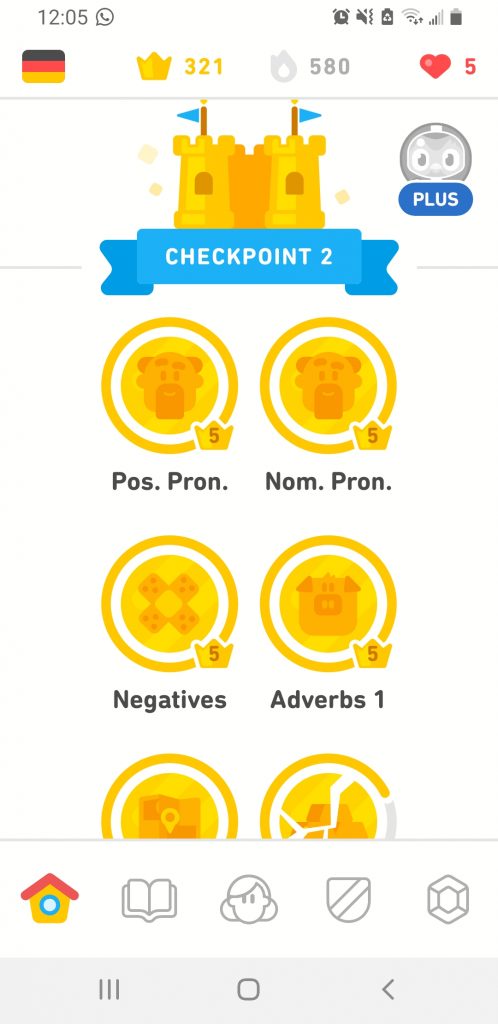
This is a image of story mode. In story mode you read in the target language but answer questions in your native language. As you progress through story mode, the readings get harder and the questions transition into the target language. As you can see, my target language is in German. The hearts on the right hand side are my lives. Since I do not have a paid subscription, my lives drop every time I make a mistake. When my lives drop to 0, I can either wait for them to recharge every 5 hours or play in practice mode to refill them back to 5. You will also see below each story has a number for XP. These are points that you collect to keep up in the leaderboards. We will talk about that a bit later.
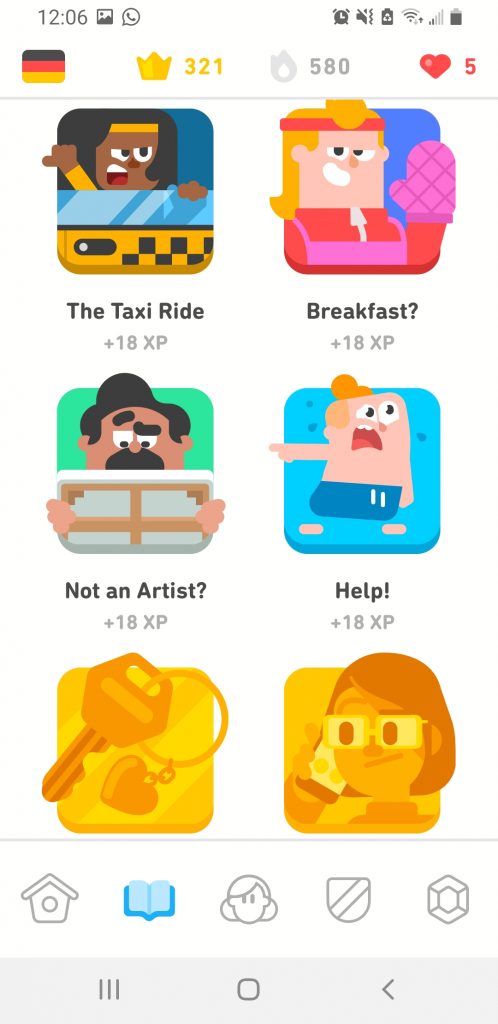
This is my profile on Duolingo. For anyone who wants to follow me with their Duolingo app, you type my user ID below (Brittany181619). I used a picture of my dog Lola as a profile pic because she is cute. You can see the target language I am using as well as my statistics and the League I am currently in. The XP number is so large because I get points for everything I do. It is common practice to repeat completed lessons, which is necessary for learning a language. The League determines which users I compete with. I can add friends and they can follow me back to see my progress in Duolingo. For anyone that uses a laptop to log in, they can use blogs to connect with their friends. My achievements are also listed below, but if you want to see them, you will need to download the app and add me to your friend list. Don’t laugh but I follow my mom. She is learning French and kicking by butt!

This is a picture of the leaderboard. You can see that I am in the Obsidian League. 10 leagues exist and each league competes with 30 people. With 300 million users on the app, the amount of duplicate leagues is crazy. As for the users that I compete with, they change every 5 days. Nor you or myself will have any idea who these competitors are. Their privacy is safe. If I want to friend any one of them, I would have to do it now, or they will be lost in Duolingo land forever. With this leaderboard the first 3 places have prizes. The top 10 places move to the next league, but the bottom 5 get booted to the previous league. You can kind of think of it like the Hotel California, you can check-out, but you can’t leave unless you want to lose your position. It’s a great way to be compelled to practice a new language daily.

These are some of the major features of Duolingo. The remaining images are from story mode. The green bar shows you your progress which is included every time that you are learning the target language. The sound buttons allow you to repeat audio text in the target language.

This is a reading exercise so I have to choose the right choice of word. As proof that I took this pic with my smartphone, you can see that Bixby Voice activated when I tried to take the screenshot with my smartphone : )
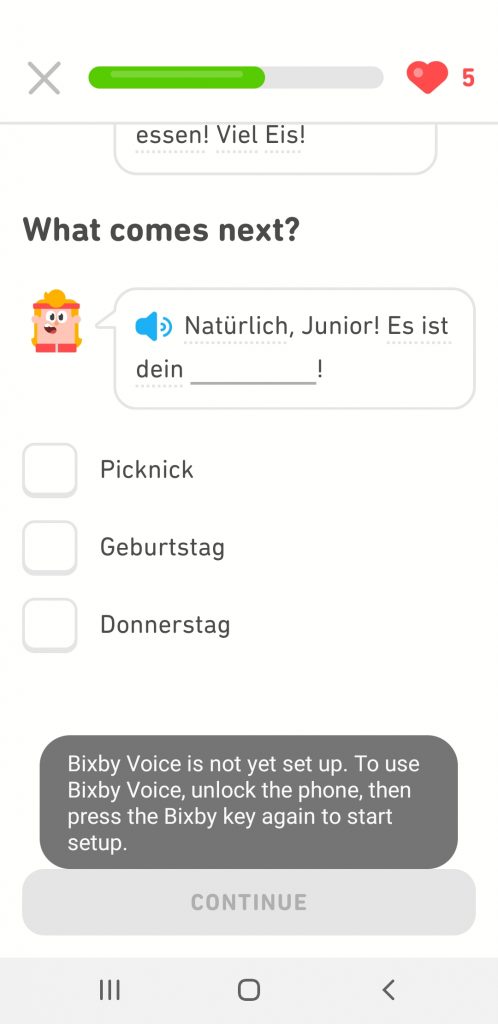
When you choose the right answer, you get a screen like this.
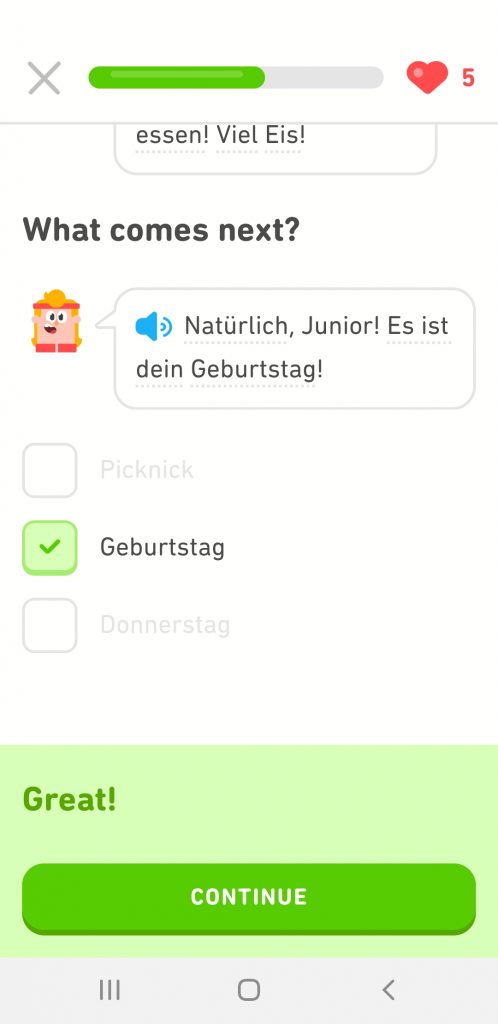
Below is the video recording of a short lesson in story mode with Duolingo. The only component you cannot see is the speaking exercises which are done in the traditional game mode. I snagged a bit of a commercial at the end. This is one of the main ways Duolingo funds their project. Everything that I posted is meant to be as authentic as possible.
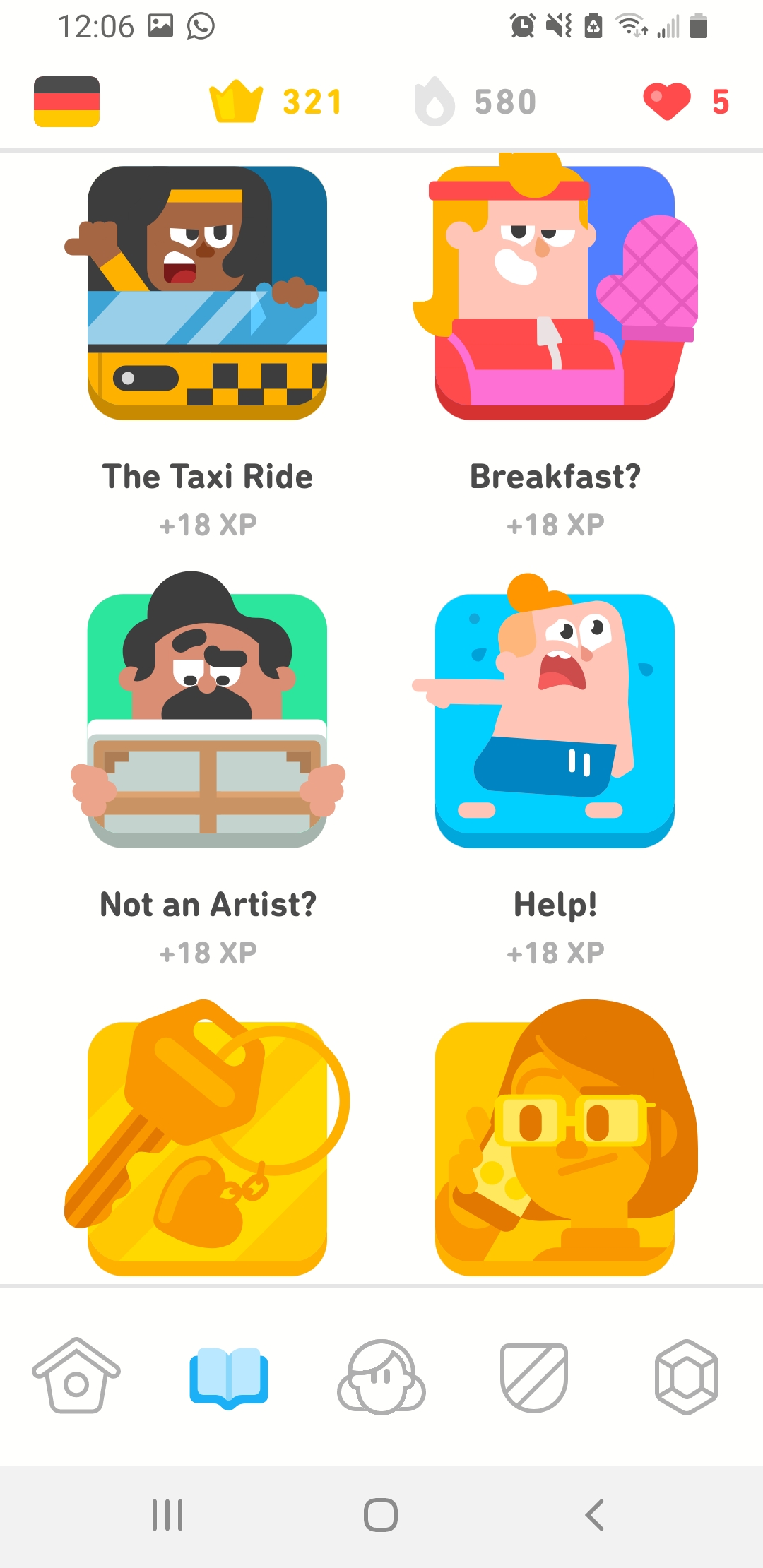
I realize that during the pandemic Duolingo skyrocketed. It actually became recognized as a test accepted for residency (at least in Canada!) I have periodically used Duolingo to maintain my Hebrew, polish my Arabic and improve my French. While it works well for the former two, I need much more communicative practice for the much more proficient latter.
Either way, your post took me on a 45- minute rabbithole detour down linguistic memory lane with my reintroduction to the tool. I’ve recommitted to learning each of these languages in microbits! Thank you!
I used Duolingo to learn Japanese before and I admit the intention behind the design of this app is brilliant. In addition, this app ticks every box of mobile learning: it’s on your device and you can access it whenever and wherever as long as it is connected to the internet. Unfortunately, my personal experience was not a success. I found the drill of multiple-choice questions boring and too repetitive. The crown rewards and league system did not motivate me to continue, and sometimes I just found myself skipping through the drill just for the sake of finishing it for the day. This app provides more opportunities for users to practice receptive language, which is not the best for someone like me who wishes to improve expressive language in an authentic way. Because of my not-so-pleasant experience, I think that interaction among users plays such an important part in mobile learning. Here are some questions to consider when designing a mobile learning system: How will the learners interact with each other? When are such interactions allowed? Do designers/educators need to monitor these interactions? What are some effective ways to monitor?